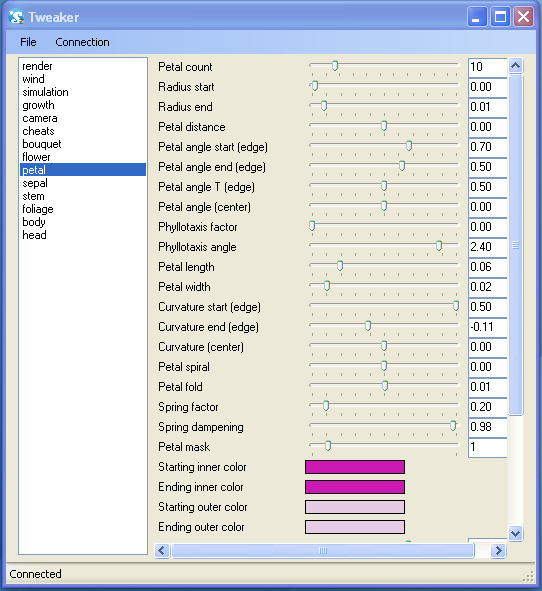The media have covered to death both sides of the coin: The stories of developers striking it big, and how the great majority of indies don’t recoup their costs. A few days ago, Markus looked at indie iPhone development and how there is a middle-ground group of developers that are able to make make a living at it without going broke but without getting that big hit. Let’s call them the developer’s middle class.
Markus suggested that about 20% of developers fall in that middle class, but my gut feeling, when it comes to iPhones and games, is that it’s more like 5-10%. But it’s just a made up number based on personal observation anyway. It would be very interesting to conduct some sort of survey (or analyze the App Store data), but I fear the results would get muddled up due to the differences between full time indies, hobbyists, and big companies.
Snappy Touch falls squarely in the developer’s middle class. I’ve been very lucky and Flower Garden’s sales have been remarkably stable, hovering at around $2,000 per week (and spiking up during promotions and new updates).
For the 90% of developers that don’t make their money back, their choices are limited to either stopping, or digging deeper in their pockets (or somebody else’s pockets) and try again. For the 0.1% that hit it out of the park, they bring in so much money they can pretty much choose to do anything they want without risking the company.
For us middle-class developers, things are tougher. We have two choices:
- The first course of action is plodding along doing what we’re doing, making a reasonable living and putting some money aside. We can build our personal and business nest egg, and then a bit more. And we can love every minute of it.
- Choice number two is to take any spare money and reinvest it in the company. And in the case of iPhone development, that can only mean getting more people involved creating the games.
 The first choice is nice and safe. We can keep doing what we love, making a living from it, and even saving some money. Assuming the App Store doesn’t collapse overnight, we might be able to pull that off for a few more years. But it has a horrible hidden cost: The opportunity cost.
The first choice is nice and safe. We can keep doing what we love, making a living from it, and even saving some money. Assuming the App Store doesn’t collapse overnight, we might be able to pull that off for a few more years. But it has a horrible hidden cost: The opportunity cost.
Most long-term, successful apps will require a fair amount of updates. New content keeps users interested, and they also expect support for new hardware (iPad, iPhone 4, etc). All the time I spend creating updates for Flower Garden is time I don’t spend making a new game. At the top of my list of hundreds of game ideas, I have four or five that I know will be successful, but the bottleneck from making them happen is my bandwidth. I can only do so much by myself.
That’s why I’ve decided that Snappy Touch needs to grow. Mind you, I’m not talking big corporation, I don’t ever want to even get to 20 people. But I would love to eventually be able to have a small team working on a new project and a few other developers maintaining and updating existing projects. I envision it happening mostly as distributed development and not in a traditional office setting.
The problem is how to start. Going from one to two people is probably the hardest step in growing a company. It’s a 100% increase! That’s probably another reason why successful startups often have three people involved from the start: Adding a fourth person is “only” a 33% increase in size, which seems more manageable.
Adding another person is also scary from a money point of view. It’s going from saving just a bit of money, to potentially spending it all so that maybe we can produce more games and make more money in the end. That’s a lesson I learned very clearly in Dope Wars: You need money to make money. To get crazy scores in that game, you had to take a huge loan out from the start (and then be really lucky). Except that in this case there’re no loans (I’m totally self-funded). And it’s also not a game, it’s real life.
Having said all of that, I’m going to turn this post into a recruiting tool (which is great because it self-selects the target audience to people who read this blog or follow me on Twitter).
Position Description
[Edit: Thanks for the overwhelming response! I already have enough candidates and the tricky part is selecting just one! I’ll post again whenever a similar opportunity opens up. Thanks!]
I’m looking for an programmer intern/part-time entry level position. Later on, if things work out, it could become a full-time position. I’m looking for someone who can dive into the Flower Garden source code and quickly be able to start maintaining it and adding features. I’ll definitely remain involved with the project, but I’ll be mostly setting the direction and working on the harder bits. I expect us to be in contact on a daily basis, and set up a quick iChat call once or twice a week (or if you’re local we can work half a day a week together).
Requirements
- Very familiar with iPhone development (you should have some apps under your belt).
- Very familiar with Objective C and the UIKit framework
- Good knowledge of C (and a tiny bit of C++)
- Available to work 10-20 hours per week. This is very flexible.
- Bonus points for knowing Python or having used the Google App Engine.
- I’d prefer someone who can work for several months (and maybe longer term).
- Local to San Diego would be great, but not a requirement as long as we can voice chat easily.
Compensation is hourly and based on experience, but remember this is an intern/entry level position. Possible bonuses based on performance and sales. Sounds like something you’d be interested in? Drop me a note and convince me you’re the right person for the job..
This post is part of iDevBlogADay, a group of indie iPhone development blogs featuring two posts per day. You can keep up with iDevBlogADay through the web site, RSS feed, or Twitter.

 In modern hardware it’s also really easy to do with a shader, but Paul wanted to use it across any iPhone device, and the majority of them are still stuck on OpenGL ES 1.1, so fixed-function pipeline it is.
In modern hardware it’s also really easy to do with a shader, but Paul wanted to use it across any iPhone device, and the majority of them are still stuck on OpenGL ES 1.1, so fixed-function pipeline it is.



 Every company I’ve ever worked at has done this mistake. The team hashes out a bunch of ideas, and somehow they pick one (or create it by committee). Maybe they’ll create a prototype to show something about the game, or maybe they’ll dive straight and start writing a design document and developing technology. If you’re lucky, or you have an extremely talented game director, the game that comes out of the other end might be fantastic. In most cases, it’s just a so-so idea and the team only realizes it when the first level comes together, years later, at around alpha time. At this point the choice is canning a project after spending millions of dollars, or patching it up to try to salvage something. Neither idea is particularly appealing.
Every company I’ve ever worked at has done this mistake. The team hashes out a bunch of ideas, and somehow they pick one (or create it by committee). Maybe they’ll create a prototype to show something about the game, or maybe they’ll dive straight and start writing a design document and developing technology. If you’re lucky, or you have an extremely talented game director, the game that comes out of the other end might be fantastic. In most cases, it’s just a so-so idea and the team only realizes it when the first level comes together, years later, at around alpha time. At this point the choice is canning a project after spending millions of dollars, or patching it up to try to salvage something. Neither idea is particularly appealing.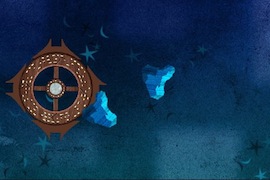 With a good prototype it’s easy to see if an idea is worthwhile. If it’s not, I discard it and move on to the next one. If it has potential but it’s just so-so, I either choose to continue just a bit longer (to ask another, better question) or I shelve it back in the list of potential game ideas. Maybe at some later time, things might click in or I might have a new inspiration and the game idea might become a lot stronger.
With a good prototype it’s easy to see if an idea is worthwhile. If it’s not, I discard it and move on to the next one. If it has potential but it’s just so-so, I either choose to continue just a bit longer (to ask another, better question) or I shelve it back in the list of potential game ideas. Maybe at some later time, things might click in or I might have a new inspiration and the game idea might become a lot stronger.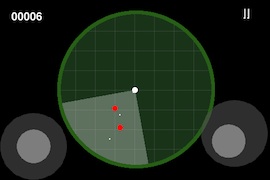 Also, a good question is concise and can be answered in a fairly unambiguous way. “Is this game awesome?” isn’t a good question because “awesome” is very vague. A better question might be “Can I come up with a tilt control scheme that is responsive and feels good?”. Feels good is a very subjective question, but it’s concrete enough that people can answer that pretty easily after playing your prototype for a bit.
Also, a good question is concise and can be answered in a fairly unambiguous way. “Is this game awesome?” isn’t a good question because “awesome” is very vague. A better question might be “Can I come up with a tilt control scheme that is responsive and feels good?”. Feels good is a very subjective question, but it’s concrete enough that people can answer that pretty easily after playing your prototype for a bit. One of the key concepts in the definition of a prototype was that it has to be fast/cheap (which are two sides of the same coin). What’s fast enough? It depends on the length of the project itself. It’s not the same thing to do a prototype for a two-month iPhone game, than for a three-year console game. Also, a larger, more expensive project probably has more complex questions to answer with a prototype than a simple iPhone game.
One of the key concepts in the definition of a prototype was that it has to be fast/cheap (which are two sides of the same coin). What’s fast enough? It depends on the length of the project itself. It’s not the same thing to do a prototype for a two-month iPhone game, than for a three-year console game. Also, a larger, more expensive project probably has more complex questions to answer with a prototype than a simple iPhone game.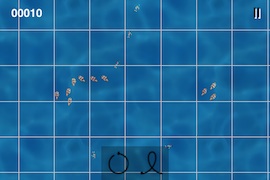 When you’re making a prototype, if you ever find yourself working on something that isn’t directly moving your forward, stop right there. As programmers, we have a tendency to try to generalize our code, and make it elegant and be able to handle every situation. We find that an itch terribly hard not scratch, but we need to learn how. It took me many years to realize that it’s not about the code, it’s about the game you ship in the end.
When you’re making a prototype, if you ever find yourself working on something that isn’t directly moving your forward, stop right there. As programmers, we have a tendency to try to generalize our code, and make it elegant and be able to handle every situation. We find that an itch terribly hard not scratch, but we need to learn how. It took me many years to realize that it’s not about the code, it’s about the game you ship in the end.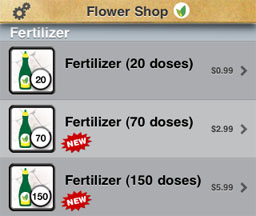 In-game point bundles are nothing new. Even before the time of in-app purchases,
In-game point bundles are nothing new. Even before the time of in-app purchases, 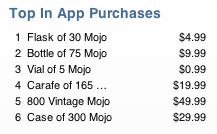
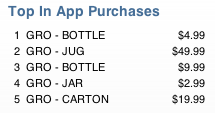

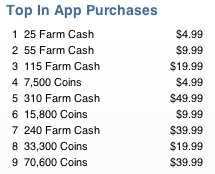
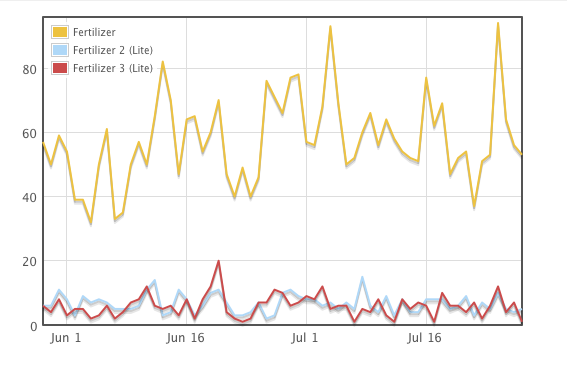
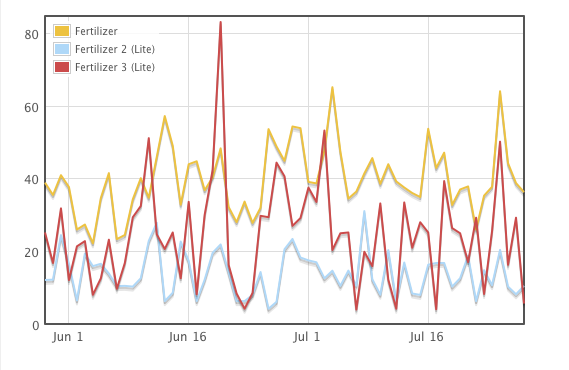
 Because we used the standard telnet protocol, we can start playing with it right away. Launch the game, telnet into the right port, and you can start typing away.
Because we used the standard telnet protocol, we can start playing with it right away. Launch the game, telnet into the right port, and you can start typing away.